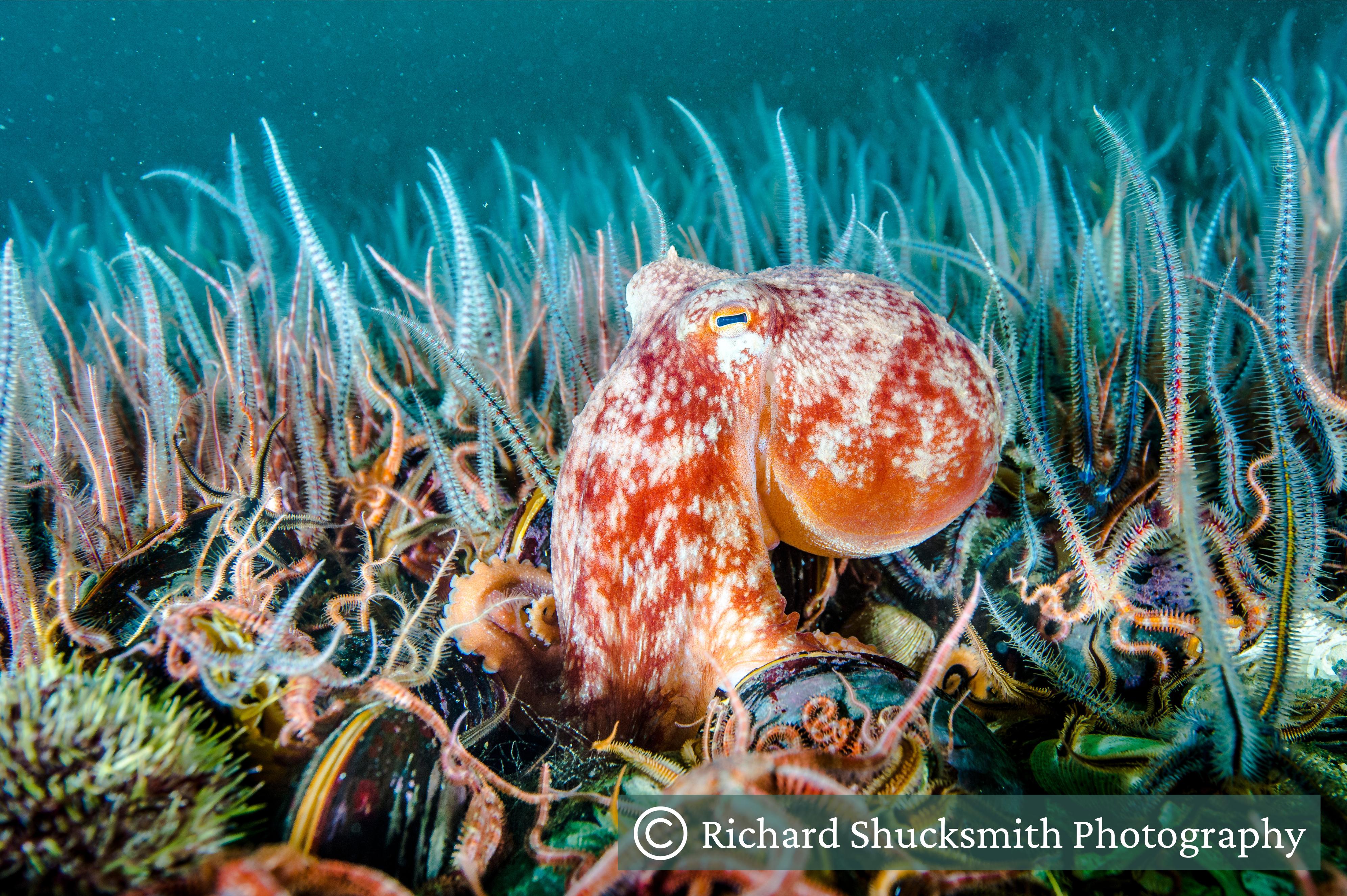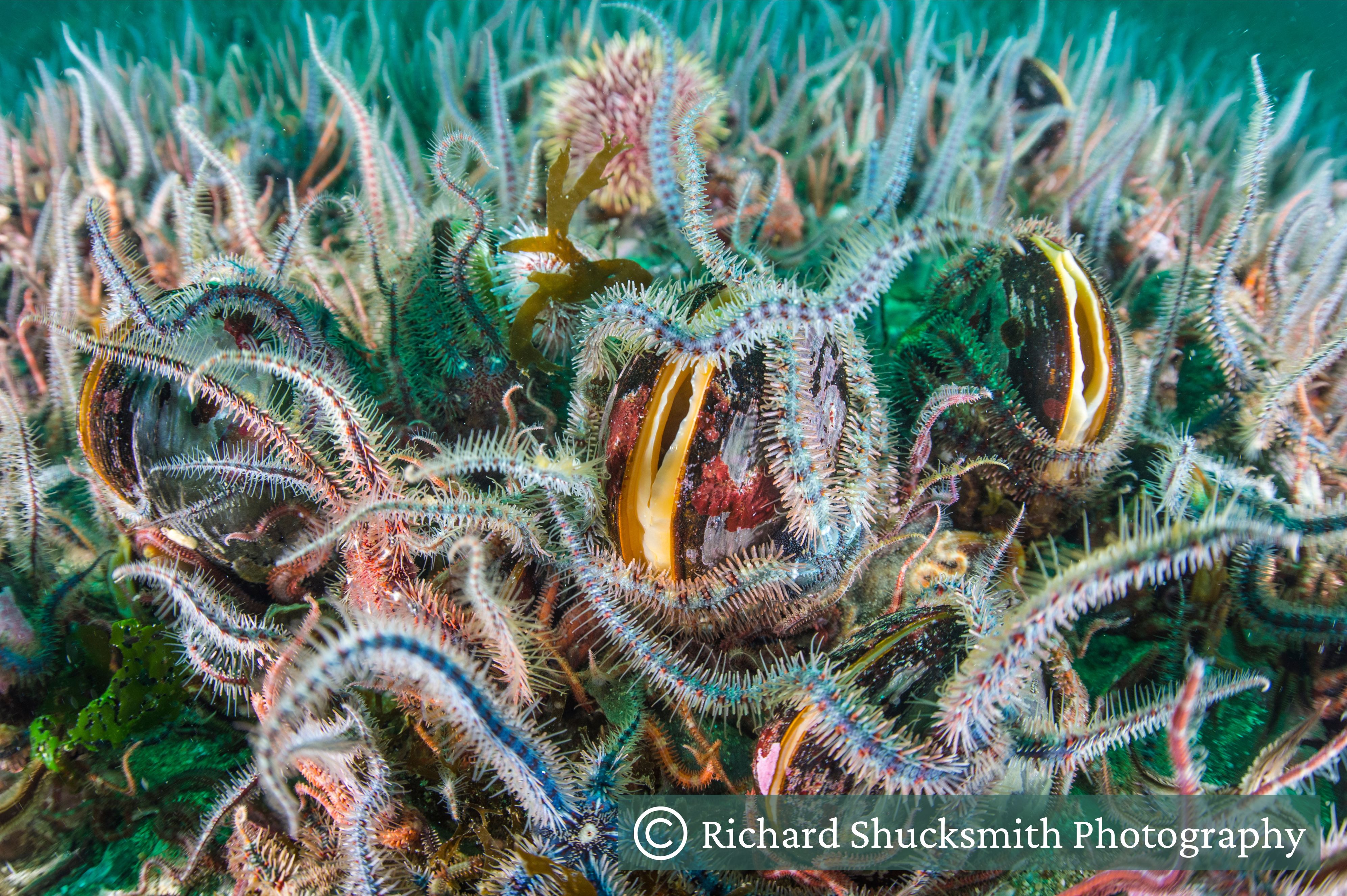Horse Mussel Beds

Horse mussel audio Photo 1
While the stunning curled octopus in this photo takes centre stage, it’s the Yoags or horse mussels underneath that are an important ocean habitat. Horse mussels are bigger than the edible mussels we find on our plates. While they usually live on their own, in certain conditions, such as the tidal sounds around Yell, they can come together to form beds. When horse mussels gather in beds, they create homes and safe places for lots of sea creatures in the nooks and crannies between the live and dead shells. In this photo, there are so many brittlestars feeding in the current it is tricky to see the mussels underneath!
The horse mussel beds in Yell form part of a Marine Protected Area and are also protected by the Shetland Shellfish Management Organisation’s voluntary closed areas for inshore fishing.
Narrated by- Louise Thomason- UHI Shetland

Horse Mussel audio photo 2
Horse mussel beds have a variety of roles. As well as creating stable habitats full of life and diversity, they can also help store carbon for a long time and can even change how water currents flow. Horse mussels are long-lived and can be well over 25 years old. The beds themselves can be a lot older, with live mussels binding together dead shells and sediment to form a stable reef. Mussels trap carbon within their shells, and as the beds accumulate a large amount of dead shell material they can become a carbon store. As time goes on, more and more carbon is captured, playing a vital role in carbon capture and storage.
Narrated by- Louise Thomason- UHI Shetland